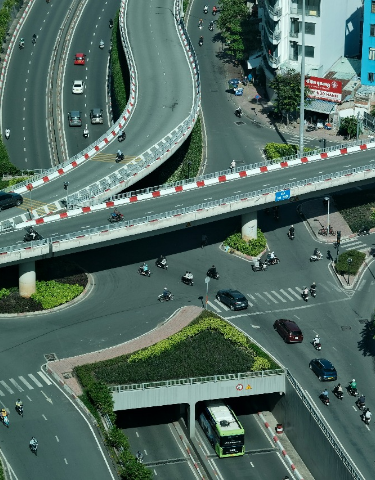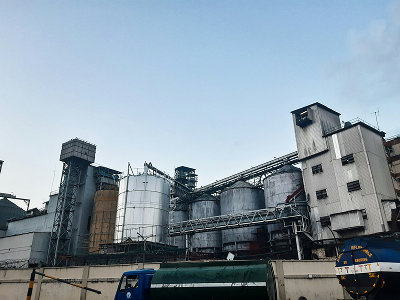Introduction
The transport sector is one of the backbone industries that drive global trade, economies, and daily logistics. Every day, thousands of vehicles, trucks, buses, and trains are responsible for moving people and goods across cities, regions, and countries. But this vast network also carries inherent risks—risks that, if not managed properly, can lead to catastrophic consequences. A thorough risk identification process will shed light on the types of risk that can range from simple mechanical failures to complex issues like cybersecurity breaches, regulatory compliance, and market fluctuations.
The Kurnool bus fire, which occurred on the Hyderabad-Bengaluru route, involved a bus that caught fire rapidly, killing dozens. The investigation revealed that a consignment of 400 smartphones, containing lithium-ion batteries, intensified the blaze, while unsafe bus modifications, like non-functional emergency exits, contributed to the disaster. This tragedy underscores a pressing need for risk management in the transport sector to ensure safety, compliance, and sustainability in operations.
Dissecting the Risks – Perils in the Transport Ecosystem
Transportation companies face a nexus of threats that can be broadly categorized, yet often converge with catastrophic results, as seen in the Kurnool tragedy. The inherent risks typically reside in three pivotal areas, though many others proliferate:
- Safety Risks: This category encompasses the mechanical and operational soundness of vehicles. The Kurnool incident highlights the risk of unauthorized vehicle modifications, where luxury features overload original electrical systems, increasing the likelihood of catastrophic failure. Furthermore, it exposes the danger of transporting undeclared hazardous or high-risk cargo (like large quantities of lithium-ion batteries), and the pervasive issue of non-functional safety infrastructure, such as blocked or broken emergency exits. This failure is a direct threat to human life and core asset value.
- Human Capital Risks: The human element is the ultimate guardian of the freight and the vehicle. This category of risk addresses the safety, training, and retention of personnel. Carriers rely heavily on skilled drivers, and a worsening global driver shortage amplifies the risk of hiring less-qualified personnel, driver fatigue, and poor adherence to protocols leading to poor safety in transportation.
- Regulatory and Compliance Risks: Operating across jurisdictions necessitates adherence to myriad, often complex, safety and labour regulations. The Kurnool case points to the risk of weak regulation and lax enforcement against unlicensed workshops and operators who violate critical safety norms, allowing preventable mechanical risks to persist.
- Supply Chain Risks: A transportation failure, be it an accident, cargo loss, or financial distress of the carrier, can trigger a disastrous domino effect across the entire supply chain. Every stakeholder, from manufacturers to retailers, depends on the timely, intact delivery of shipments. A single lapse can harm reputations and decimate profits throughout the network.
- Infrastructure and Environmental Risks: Carriers constantly battle outdated infrastructure, severe weather events, and traffic congestion. These persistent challenges are now overlaid with newer, more complex risks.
- Technological and Cybersecurity Risks:The rapid advancement of technology introduces formidable risks like sophisticated cyber attacks targeting logistics systems, fleet management software, and cargo tracking databases.
- Market Risks and Economic Risks: Economic factors, such as tariffs and trade disputes, can affect the transport sector by introducing delays, increasing costs, and disrupting operations.
Why Should the Transport Sector Implement Risk Management?
Risk management is vital for transportation companies to anticipate, assess, and mitigate the risks they face. Here’s why effective risk management strategies are necessary:
1. Proactive Risk Identification
- With Naga169 transportation risk management, companies can identify risks early in the process, whether they involve vehicle maintenance, compliance, or environmental hazards. Early identification enables businesses to address potential issues before they escalate into crises.
2. Improved Safety and Reduced Accidents
- A comprehensive operational risk management framework improves safety protocols, reducing the likelihood of accidents like the Kurnool bus fire. Regular inspections, driver training, and safe vehicle modifications all contribute to a safer environment.
3. Legal and Regulatory Compliance
- Transport companies are required to comply with various safety, environmental, and operational regulations. Risk management frameworks ensure that these standards are met, preventing regulatory risks such as fines, penalties, and reputational damage from non-compliance.
4. Enhanced Decision-Making
- Risk management frameworks allow decision-makers to make informed, data-driven choices. By evaluating risks in terms of their likelihood and impact, transportation companies can optimize resources and make strategic decisions that align with their long-term goals.
5. Stakeholder Trust
- Implementing robust risk management fosters trust with stakeholders, including regulators, customers, and investors. It demonstrates a commitment to safety, sustainability, and responsible operations.
Who Gains from Smart Risk Management in Transportation?
- The Enterprise/Carrier: By quantifying and addressing risks, the carrier protects its fleet, human capital, and financial footing. Proactive ERM ensures business continuity and lowers the cost of capital by presenting a more stable profile to insurers and investors. Risk management drives superior compliance and safety culture, reducing the probability of tragic events like the Kurnool fire. This builds public trust and mitigates the threat of punitive governmental intervention.
- The Supply Chain (Shippers and Customers): A carrier with robust logistics risk management guarantees higher on-time performance and reduced cargo damage, safeguarding the customer’s supply chain and reputation.
- Employees (Drivers and Staff): Investing in risk management, particularly in vehicle maintenance and driver training, directly protects the well-being and longevity of the workforce.
How Enterprises Can Better Manage Transport Risks Today
Forward-thinking mitigation strategies demand a 360-degree view: from prediction to response, from fleet-to-data. Below are strategic approaches.
Fleet- and driver-oriented mitigation
- Rigorous maintenance schedules: periodic inspections, fire-safety checks (especially when vehicles are modified), adherence to design norms.
- Driver training and monitoring: safe-driving programmes, fatigue management, emergency-evacuation drills, strict adherence to limits.
- Cargo-control protocols: ensure that buses/trucks abide by cargo classification rules; hazardous items (lithium-ion batteries, large commercial consignments in passenger vehicles) must follow safety norms.
- Route-risk mapping: using telematics and GPS to monitor routes for hazards (accident-prone stretches, inadequate lighting, poor road surfaces).
Compliance and regulatory alignment
- Ensure all vehicle modifications are approved and documented; regulatory audits must cover sleeper-conversions, fire-safety gear, emergency exits and registration-validity.
- Adopt digital compliance systems: renewal reminders, document tracking, violation-flagging (this prevents repeat offenders from operating).
- Collaborate with regulators: proactively update safety-policies, emphasise enforcement of standards, and participate in industry safety programmes.
Technology-enabled risk mitigation
- Asset tracking and telematics: Asset-tracking tech improves risk management and lowers insurance expenses.
- Real-time data integration: Modern solutions provide predictive insights on weather, route hazards, cargo risk and allow dynamic decision-making.
- Control-tower/visibility solutions: Central dashboards that integrate fleet, cargo, route, and environmental data, enabling instant alerts and alternate-routing when required.
- Digital twins and simulation: Mapping entire transport networks, identifying weak nodes through cybersecurity risk assessments, and stress-testing scenarios (such as bus fire, route closure, cyber-attack).
Supply-chain and stakeholder resilience
- Collaborate with shippers, brokers and customers: share risk-profiles, communicate mitigation plans, ensure transparency in carrier risk credentials (helps win business).
- Disruption-response planning: Pre-defined playbooks for accidents, evacuations, route-diversions, alternative vehicle deployment and crisis-communication.
- Continuous improvement and learning: Post-incident review (for example analysing the Kurnool bus fire), root-cause analysis, feedback loops into policy and training.
- Insurance and financial resilience: Supply chain risk management reduces claims exposure and may lead to favourable insurance terms; it also supports business continuity in the face of major incidents.
Practically put, transport organisations should adopt a “risk-intelligent” mindset: detect early, act swiftly, learn continuously, and invest in mitigation before the next accident.
How Should Risk Management Be Applied to the Transport Sector?
To embed risk management meaningfully, transport organisations should adhere to the following framework:
- Develop executive support for risk management: The board and senior leadership must prioritise safety and risk, set tone and allocate resources. Without leadership buy-in risk initiatives falter.
- Define risk management leadership and organisational responsibilities: Clear accountabilities—fleet manager, safety officer, driver-training lead, data/telemetry lead.
- Formalise risk-management approaches using a holistic model: Link risk management to organisational strategy (fleet renewal, route expansion, digital transition). Use standards, templates for identification, assessment, treatment and monitoring.
- Use risk management to re-examine existing policies, processes and standards: When the bus in Kurnool was illegally converted, it exposed policy gaps. Organisations should audit whether their policies are still fit-for-purpose given new risks (e.g., lithium-ion battery cargo) and update accordingly.
- Embed risk management in existing business processes: Safety checks, driver sign-offs, modification approvals, route assignment, cargo checks must integrate risk management rather than stand alone.
- Identify risk owners and manage risks at the appropriate level: For example, driver-behaviour risk might be owned by operations manager; fleet-structural risk by engineering; cargo risk by logistics head.
- Use the risk-management process to support risk allocation in projects and operational decisions: When purchasing new vehicles or changing route profiles, assessments must include risk-treatment cost, mitigation plans, emergency-response readiness.
- Use risk management to make the business case for transport and build trust with stakeholders: A carrier with a documented risk-management programme can attract shippers who prioritise reliability and safety, and thereby gain competitive advantage.
- Employ sophisticated risk-analysis tools, but communicate results simply: Advanced analytics (e.g., route-risk modelling, fleet-failure prediction) are valuable, but must be translated into clear, actionable dashboards for executives, drivers, and operations staff.
By following these steps, transport organisations shift from reactive crisis-management to proactive risk-intelligence—ultimately saving lives, reputation and cost.
Modern Transportation Risk Analysis Framework
Transport organisations today must align with a framework comprising several integrated components:
- Comprehensive Risk Assessment
- Collect data on fleet condition (age, modifications, fire-safety systems), driver records (violations, training), route history (accident-prone zones), cargo profiles (hazardous items, load deviations).
- Identify event likelihood and severity (e.g., probability of bus fire in converted sleeper coach, estimated casualties).
- Analyse interdependencies (e.g., overloaded electrical system + lithium-ion battery cargo + delayed evacuation = high-severity scenario).
- Prioritise risks using risk matrices or scores (likelihood x impact).
- Instant and Actionable Reporting
- Implement dashboards that deliver real-time alerts (e.g., excessive violations, mechanical fault codes, black-spot on route, cargo anomaly).
- Provide clear escalation protocols: when risk-score exceeds threshold, trigger immediate mitigation (route diversion, vehicle pull-out, driver briefing).
- Ensure visibility across stakeholder levels: drivers (alerts), operations managers (fleet status), senior leadership (risk-portfolio overview).
- Integration
- Data from multiple systems must integrate: telematics, TMS (transport management system), ERP, compliance databases, external risk feeds (weather, regulatory changes).
- Avoid silos: when data lives in disconnected spreadsheets, delayed, outdated or error-prone analysis results—and mitigation becomes too late.
- Ensure end-to-end visibility: from cargo pick-up through route, drop-off and return leg; all stakeholders see consistent information.
- Based on assessment and reporting, define mitigation actions: e.g., suspend bus for full electrical inspection, retrain driver, retrofit fire-suppression system, restrict cargo types, change route.
- Use scenario-planning: “what if” analyses help choose between alternate routes, vehicles, or modes under risk.
- Allocate budget and authority for risk-treatment: retrofit fire systems, invest in telematics, conduct third-party audits.
- Pre-position contingency assets: spare vehicles, alternate carriers, emergency-response kits, evacuation procedures.
- Risk Monitoring
- Risk-portfolio must be continuously monitored; new risks emerge (e.g., cyber-attack on vehicle ECU, new regulation on sleeper-conversion).
- Provide scalability: as fleet grows, new routes are added, new cargo types appear, the risk-framework must scale accordingly.
- Use feedback loops: after an incident (or near-miss) conduct root-cause analysis, update risk registers, revise mitigation plans.
- Publish risk scores, key-risk indicators (KRIs), incident trends and integrate into board-level reporting.
The Benefits of Transportation Risk Management
When implemented effectively, transportation risk management delivers multiple advantages:
- Safety and human-life protection: fewer accidents, lower fatalities, improved emergency-response.
- Operational resilience: fewer disruptions, more predictable service levels, improved on-time delivery performance.
- Cost control and insurance benefits: lower premiums, fewer claims, reduced penalties, fewer unplanned maintenance/corrective-actions.
- Stakeholder confidence and competitive differentiation: shippers, passengers, regulators, insurers view the business more favourably when risk management is demonstrable.
- Strategic decision-making: by integrating risk into strategic planning (fleet renewal, route diversification, cargo segmentation), organisations align resources to risk exposure and opportunity.
- Regulatory compliance and reputational protection: compliance breaches (such as in the Kurnool case) are costly, potentially criminal. Risk management proactively addresses compliance risks, preventing the consequences of non-compliance and maintaining the company’s reputation in the face of potential legal scrutiny.
Future Outlook – Forging a Risk-Intelligent Transport Sector
The transport sector is evolving fast: electric vehicles, digital fleets, shared mobility, zero-emission regulations, autonomous vehicles, advanced telematics, cargo-diversification. With these changes come new risks—some familiar, many novel. For example:
- Increased electrification adds battery-fire risks, as seen in the smartphone consignment in the Kurnool bus fire.
- Autonomous or semi-autonomous driving introduces software-failure, cyber-security and AI-decision risks.
- Cargo-mix changes (ride-share with freight) increase complexity.
- Climate change intensifies extreme-weather risk; studies show extreme weather is the top supply-chain risk for 2025 and beyond.
- Digitalisation and big-data open opportunities for predictive risk management but also expose firms to data-breach, system-fault and algorithm bias risks.
Therefore, to quote from the field of risk management: simply hoping nothing happens is no longer an option. Organisations must build their sails for the storm—not pretend the wind will disappear. Only those organisations that treat risk management as foundational will thrive. Transport organisations should prioritise: strategic readiness for risks, digital-fit risk-intelligence platforms, a proactive safety-culture, disaster risk management and continuous learning. By doing so, companies ensure every passenger, every freight consignment and every vehicle contributes to safe, secure and sustainable mobility.
FAQs
1.Why is risk management important in transportation?
Risk management in transportation allows companies to anticipate, assess, and mitigate the risks they face.
- Early risk identification enables businesses to address potential issues before they escalate into crises.
- A comprehensive risk management approach encourages regular inspections, driver training, and safe vehicle modifications – all contributing to a safer environment.
- Risk management frameworks ensure that safety, environmental, and operational standards are met, preventing the consequences of non-compliance.
- Risk management frameworks allow decision-makers to make informed, data-driven decisions that align with their goals.
- Implementing robust risk management demonstrates a commitment to safety, sustainability, and responsible operations.
2.How can Enterprise Risk Management (ERM) prevent disasters in transport operations?
- Risk management drives superior compliance and safety culture, reducing the probability of tragic disasters. This builds public trust and mitigates the threat of punitive governmental intervention.
- Proactive ERM ensures that risks are quantified and addressed. By doing so, the carrier protects its fleet, human capital, and financial footing thereby maintaining business continuity.
- A carrier with robust risk management guarantees higher on-time performance and reduced cargo damage, safeguarding the customer’s supply chain and reputation.
- Investing in risk management, particularly in vehicle maintenance and driver training, directly protects the well-being and longevity of the workforce.
3.How can transport companies integrate risk management into daily operations?
Transport companies can integrate risk management into their daily operations by adhering to the following framework:
- The board and senior leadership must prioritise risk, set tone and allocate resources.
- Define risk management leadership and organisational responsibilities.
- Link risk management to organisational strategy (fleet renewal, route expansion, digital transition) and existing business processes (safety checks, driver sign-offs, modification approvals, route assignment, cargo checks)
- Organisations should audit whether their policies are still fit-for-purpose given new risks and update accordingly.
- Employ sophisticated risk-analysis tools (e.g., route-risk modelling, fleet-failure prediction) and translate the data into clear, actionable dashboards for staff.















